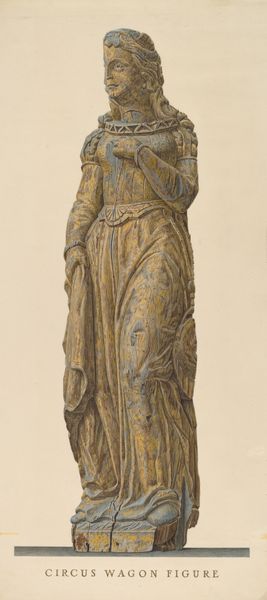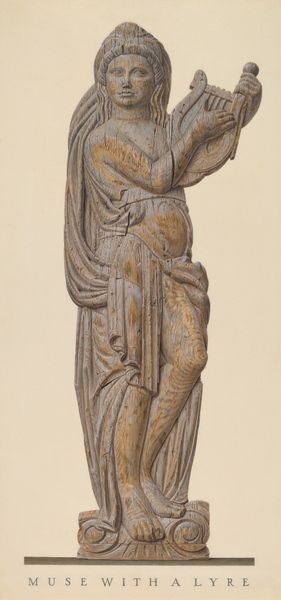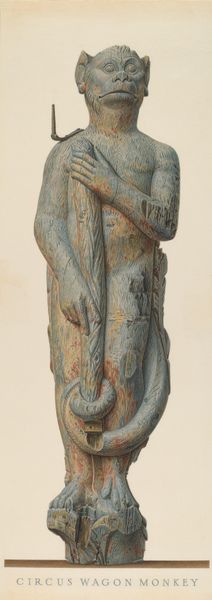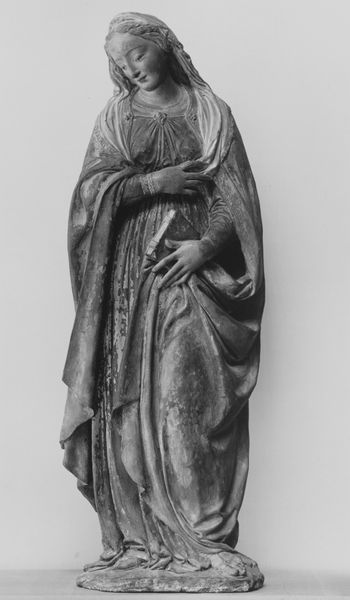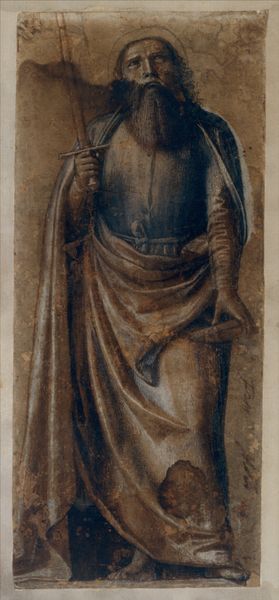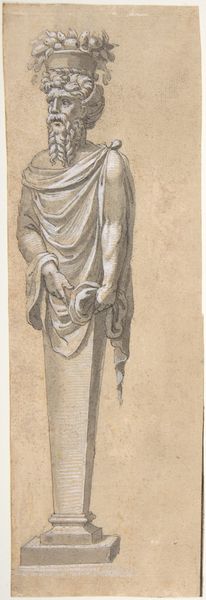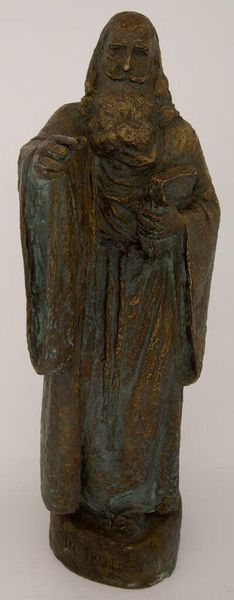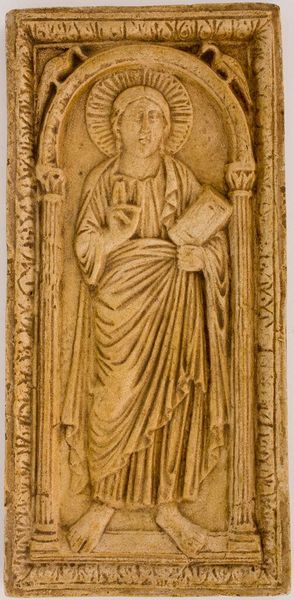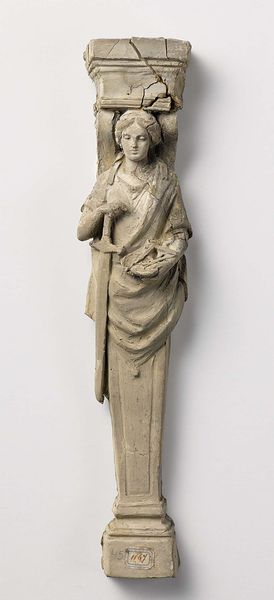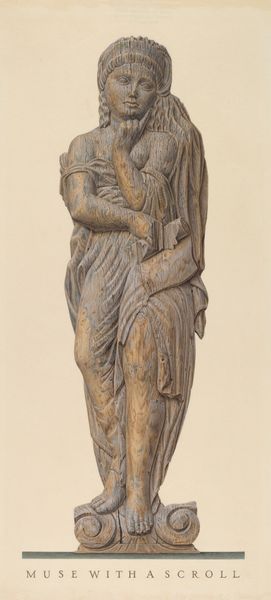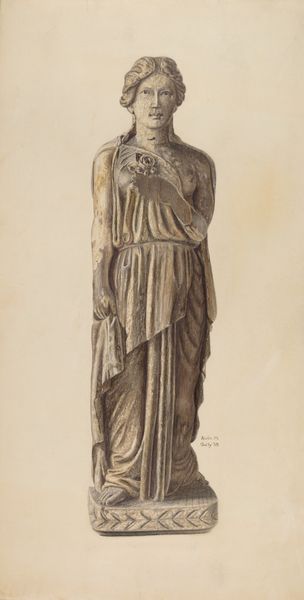
drawing
#
drawing
#
aged paper
#
toned paper
#
pencil sketch
#
charcoal drawing
#
possibly oil pastel
#
charcoal art
#
coloured pencil
#
underpainting
#
watercolour illustration
#
watercolor
Dimensions: overall: 58.6 x 25.2 cm (23 1/16 x 9 15/16 in.)
Copyright: National Gallery of Art: CC0 1.0
Editor: This is John Matulis' "Circus Wagon Figure," created around 1938, and it appears to be a drawing using charcoal, colored pencil, and possibly watercolor on aged paper. There’s a faded beauty to it, almost a melancholy in the figure’s expression. What strikes you most when you look at this piece? Curator: I'm immediately drawn to the tension between the title "Circus Wagon Figure" and the inscription “Indian Maiden." This immediately begs questions about cultural appropriation and exoticism within the historical context of the circus and popular entertainment during that period. What narratives were being constructed and reinforced about identity, particularly regarding Indigenous women? Editor: That's a really important point. I was so focused on the art itself that I overlooked the loaded implications of the title and inscription. The circus, particularly in the 1930s, definitely played a role in perpetuating stereotypes. Curator: Exactly. How does the artist's choice of medium— the almost washed-out effect of the watercolor— contribute to this sense of distance or otherness? Does it perhaps romanticize or further idealize a figure that’s already based on harmful stereotypes? Editor: It almost creates a veneer of respectability, I think. Like taking something that would have been very crass in another form, like a circus banner, and elevating it to ‘art.’ That's really troubling. Curator: It is. Thinking about this piece through a contemporary lens, it forces us to confront the legacy of representation and power. It serves as a potent reminder to critically examine the images and narratives that surround us and how they shape our understanding of identity and difference. Editor: Wow, I had initially just thought of it as a charming, if somewhat old-fashioned drawing. Thanks for providing the context. Curator: My pleasure. Looking beneath the surface often reveals uncomfortable truths, but those truths are vital to a more informed and critical understanding of art and its role in society.
Comments
No comments
Be the first to comment and join the conversation on the ultimate creative platform.
